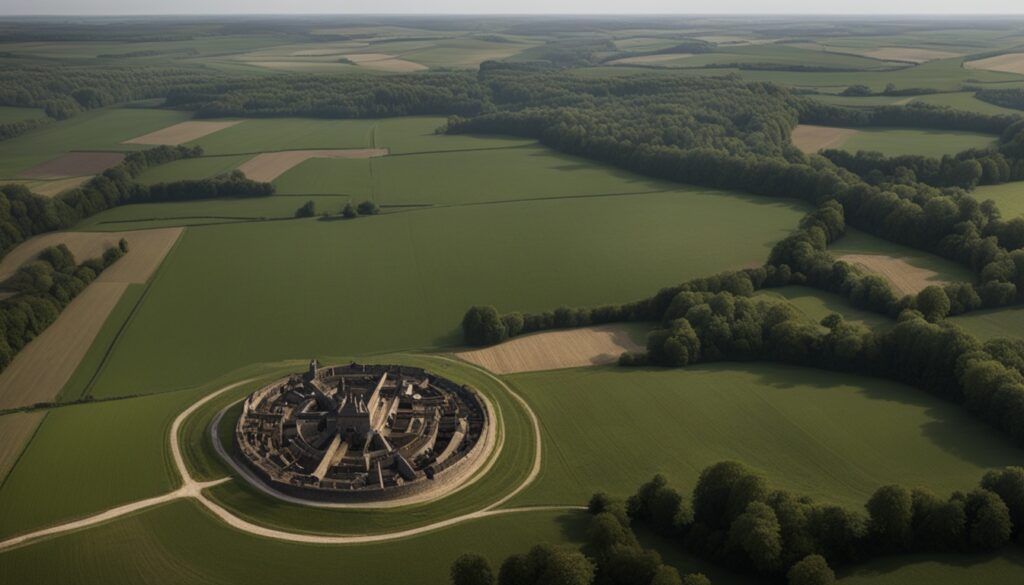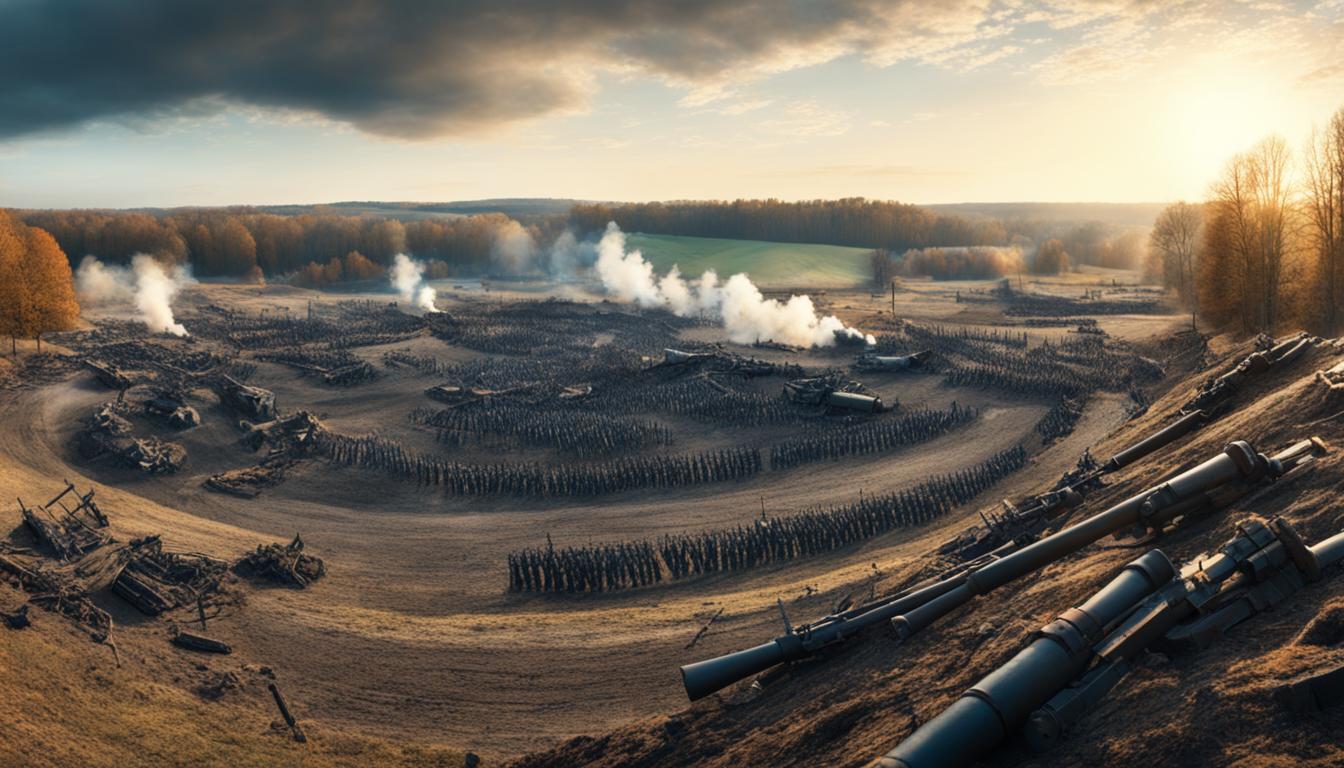The famous Battle of Waterloo didn’t occur in Waterloo, Belgium. It actually took place a few miles south, in an area called Mont-Saint-Jean. The Battle of Waterloo location is often misunderstood.
Napoleon never stepped foot in Waterloo during the conflict. The Duke of Wellington, leading the Allied forces, set up his headquarters in Waterloo village. This is why the battle got its name.
The French called it the “Battle of Mont Saint-Jean”. This name reflects where the main fighting happened. The battle’s outcome changed European history forever.
Various factors influenced the battle’s result. These included the land, weather, and army strategies. The Battle of Waterloo ended Napoleon’s reign and reshaped Europe’s political landscape.
Key Takeaways
- The Battle of Waterloo was not fought in the town of Waterloo, but rather in the nearby villages of Braine-l’Alleud and Plancenoit.
- Napoleon Bonaparte never set foot in Waterloo during the battle.
- The Duke of Wellington’s headquarters in Waterloo led to the battle being named after the town, despite the main engagement taking place elsewhere.
- The French referred to the conflict as the “Battle of Mont Saint-Jean,” reflecting the actual location of the fighting.
- The Battle of Waterloo’s outcome was influenced by factors such as terrain, weather, and military strategies.
Napoleon’s Final Stand: The True Location of the Battle
The Battle of Waterloo wasn’t fought in Waterloo itself. Most fighting happened on Mont Saint Jean Ridge, south of Waterloo. This ridge, between Braine-l’Alleud and Plancenoit, was where Napoleon’s empire met its end.

The Duke of Wellington led a diverse Allied army. Half were from German states. Dutch, Belgian, British, Irish, Welsh, and Scottish soldiers fought too. They faced Napoleon’s French army, which wanted to regain control of Europe.
The battle raged on Mont Saint Jean Ridge. Allied forces held their ground against the French. Later, 50,000 Prussian soldiers arrived, led by Marshal Gebhard Leberecht von Blucher.
The Prussians joined in the late afternoon. They reinforced Wellington’s tired troops. Their intervention was crucial to the battle’s outcome.
Prussians fought in Plancenoit and Braine-l’Alleud villages. This drew French resources away from the main attack. Wellington’s army regrouped and counterattacked, leading to French defeat.
The battle’s name comes from nearby Waterloo. But fighting happened on Mont Saint Jean Ridge and surrounding areas. Braine-l’Alleud and Plancenoit played key roles. This larger area shaped Europe’s future in June 1815.
Waterloo Battle Location: Factors That Influenced the Outcome
The Battle of Waterloo shaped European history. Several key factors led to Napoleon’s defeat. Heavy rain made the ground muddy, delaying Napoleon’s attack until midday.
This delay allowed Prussian reinforcements to arrive. General Blucher’s troops supported Wellington’s forces. Their timely arrival tipped the scales in favor of the Allied coalition.
Napoleon’s health may have affected the battle’s outcome. He reportedly had painful hemorrhoids that morning. This prevented him from riding his horse to survey the battlefield.
His limited movement could have impacted his decision-making. It may have hindered his ability to respond to changing situations on the ground.
The battle location also played a crucial role. Wellington’s right flank was his escape route. A strong French attack there might have changed the result.
If Napoleon had taken personal command, things might have been different. His typical decisiveness could have turned the tide. However, various factors combined to seal his fate.
The Waterloo weather, Prussian reinforcements, and Napoleon’s health issues led to his final defeat. These elements together determined the battle’s outcome.
The Legacy of Waterloo: Beyond the Battlefield
Waterloo’s legacy goes beyond the battlefield. After the fight, locals removed front teeth from fallen soldiers. These “Waterloo teeth” were sold to dentists for making dentures.
Napoleon’s defeat at Waterloo ended his reign. He was exiled to St. Helena, where he died in 1821. His legacy lives on through his tomb in Paris and his iconic image.
The victorious Duke of Wellington received a huge reward. He got 200,000 British pounds, worth about 15 million pounds today. Waterloo’s impact also led to technological advances.
One such advance was the Washington-Moscow hotline. It improved communication between the U.S. and Soviet Union during the Cold War. This helped prevent misunderstandings and potential nuclear conflicts.
Waterloo’s effects still echo today, over two centuries later. Its legacy spans from grisly souvenirs to lasting fame. The battle remains etched in military history and popular memory.

Leave a Reply